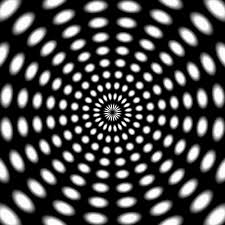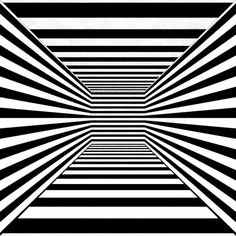|
LITR 4368 Literature of the Future |
Sample answers
for Essay 1:
|
 |
Zachariah Gandin
3/28/2019
(Part 1)
The Humanistic Element of the Future
At the beginning of this semester I had
no idea really of what to expect in terms of what this class would cover. From
glancing at the texts we would need, I had the basic image in my mind that we
would be getting some sort of classic image of science fiction from an earlier
viewpoint like H.G. Wells. Through the course of the semester I discovered that
this course was so much more. It was a collaborative effort, both on the part of
myself and my peers, but also my past peers, and even the writers of speculative
and science fiction. The way that Dr. White had structured his course felt like
some large field project or research into the greater human aspect of what the
future, in its multitude of different forms, could hold. We conducted this field
study of the future by exploring in great depth the three main narratives of the
future, or speculative or science fiction, which are millennial, evolutionary,
and alternative. After developing an even clearer idea of how humans look
towards the future, especially since the midway point of the semester, I find I
am most intrigued by the visions or scenarios of the future that deal with our
humanity and what that humanity might look like. The scenarios that stood out to
me the most in this direction were the realistic low-tech futures that dealt
with our humanity as a central focus and then the possible visions that may
begin as ideals of the future we could go of utopias or dystopias, and finally
ecotopias. Together, low-tech, utopian and dystopian, and ecotopian visions of
the future explore what it is that makes us human but it is the combined effort
of all the scenarios of the future that paint a picture of how humans see or
envision how the future might be.
The scenarios of the future that we
explored this semester include high tech and virtual reality, low tech and
actual reality, utopias, dystopias, and ecotopias, and finally alien contact. I
found the high tech or virtual reality versions of the future and also alien
contact scenarios to be too focused on escape and avoided dealing with the
harder humanistic issues almost entirely by avoiding them and distracting the
reader with a lot of cool gadgets and action. There are a few writers who seemed
braver and used this high level of technology to explore humanity like the
concept of a singularity or new forms of humanity and what that might entail.
Additionally, some high-tech scenarios like “The Logical
Legend of Heliopause and Cyberfiddle” contrasted high tech and low-tech
scenarios in order to explore human concepts like having real contact with
physical objects and emotions and of course one of the most human things about
us, music. Overall, high tech seemed to focus on the technology itself and
either just delivered an interesting story or possibly even delivered a warning
of what too much technology could do to create a rift between humans and their
humanity while alien contact had a similar potential but also was used to escape
from real human problems.
It was when we explored the scenarios
of a low-tech future or a more realistic future like in
Parable of the Sower, did I find that
I could start to relate to where writers of speculative and science fiction were
trying to take me or show me. Low-tech science fiction, as Dr. White explains on
his definition page, “reacts against the bewildering and dehumanizing aspects of
the rapid technological change represented by High-Tech or Cyberpunk scenarios.”
This reaction of low-tech scenarios appealed to me for the issues I mentioned
that I had with high-tech visions. The whole intention of Low-Tech is to get
into the nitty-gritty of humanity and explore those harder to deal with issues
that High-Tech seems to ignore for the most part. Low-Tech speculative or
science fiction “encourages human re-engagement with actual reality,
particularly biological human existence; e.g. family relations, physical
contact, organic food versus synthetics” as Dr. White tells it on his definition
page. This encouragement is very evident in stories like “The Logical Legend of
Heliopause and Cyberfiddle” by Richard Goldstein, as I mentioned above that uses
a contrasting low and high tech in its story to seemingly subvert the overuse of
technology and a high-tech future without things like music and the touch of
things. It displays that one of the most human aspects is the ability to create
things with our own two hands, to create beautiful things like a violin and to
make music from it. There is natural barrier that humans cannot move past called
the Heliopause, and it is only once the protagonist goes back to humanistic and
low-tech principles and creates music from his own two hands out of trees that
were once growing are they finally able to reconnect with their soul and
transcend something that all of the technology in the world could not.
Utopias, dystopias, and even ecotopias
move in the same direction as low-tech future scenarios as they try to envision
the best way for humans to continue on into the future. Utopias and dystopias
appear to be the opposite sides of the same coin. Utopias are (some) humans’
idea of a perfect world, a perfect system to organize ourselves within and
achieve some sort of perfect balance of living. An example of a utopia is found
in “Newton’s Sleep” by Ursala K. LeGuin. In this story, humans have created a
“prefect” example of an organized society out in space in a space station where
they only accept the smartest people to be their citizens. This very quickly
begins to disintegrate into a dystopia when they find that they did not account
for certain aspects of the human psyche and begin having realistic visions of
all of the things they did not take with them from Earth and realize that there
is so much to humans than can ever be fit into an exclusive and “perfect
system.”
On the other hand, dystopias are utopias gone wrong
(like they often do) and deal with the issues of a specific utopia or even our
current world or an alternate world very similar to ours that has disintegrated
into a dystopia. This is present in narratives like “Newton’s Sleep” as
mentioned above that first introduce a utopia only to have it fall into a
dystopia in order to explore some of the existential factors that may go into
what makes up our humanity. Some examples of a dystopia would be “Speech Sounds”
or Parable of the Sower by Octavia
Butler. In both of these stories, Butler delivers a world that is not too
dissimilar to ours but shows it either collapsed or in the process of that
collapse. In “Speech Sounds,” humans are afflicted by some kind of disease or
virus that has taken away some vital ability in the brain to communicate, and
often times it is the portion of communication most important to the individual.
Butler uses this feature to explore just how important and just how human the
ability to communicate and then explores a dystopian world in which only a few
people can communicate and even then, in only limited ways.
Finally, ecotopias are another form of utopia that seem
to attempt to blend elements of utopian, dystopian, and a low-tech future. Dr.
White defines ecotopia as “a community whose collective social health imitates
nature’s interconnectivity.” This direction of balance of life with nature and
humans harmonizing with life, nature, and each other presents a type of future
that pulls us in the opposite direction of a high-tech future. An example of an
ecotopia is found in “Choco” by Ernest Callenbach, in which humans now live in
harmony with nature and attempt to find a balance between themselves, their
neighbors, and nature itself. Even this ecotopia is described to have come about
from and be in direct response to the dystopia of the “machine people” or
frankly us. This story seeks to both entertain and educate us as it explores a
system in which humans can survive perpetually into the future in harmony with
everything around them and also while holding onto their humanity.
Out of all of the scenarios of the future we have
explored this semester, I found low-tech, dystopian, and ecotopian visions to be
the most realistic and most concerned with fundamental humanistic concepts.
Low-tech seemed to be in response to high-tech scenarios, dystopian in response
to utopian, and finally, ecotopian seemed to be in response to almost every
scenario of the future. All of these scenarios did however deal with the human
condition and how humans might realistically continue on into the future and
hopefully in the most optimistic and benevolent fashion. Every single scenario
though, low and high tech, utopian and dystopian, ecotopian, and even alien
contact all displayed how humans as a whole envision and imagine how the future
might look and continue in the future.


